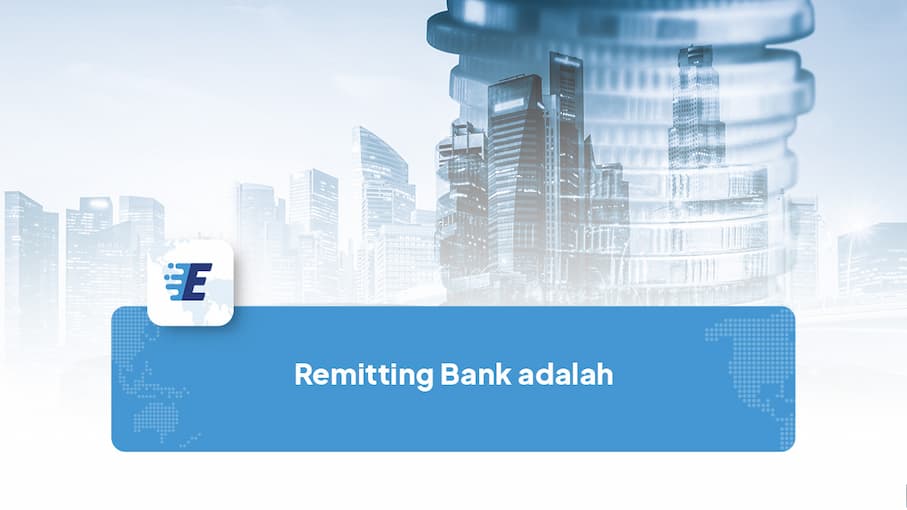Last updated on November 6th, 2025 at 09:52 am
Have you ever heard the term "bank remittance" when sending money abroad? If you frequently make international transfers, whether for business, school, or sending money to family, this term will likely come up frequently. Well, in this article, we'll thoroughly discuss bank remittances, from their definition, elements, and how they work. Let's see the explanation below!
What is a Remitting Bank?
List of contents
A remitting bank is the bank responsible for sending money from the sender to the recipient in another country. Usually, this happens in cross-border transactions or remittances (sending money abroad).
A simple example: If you want to send money from Indonesia to a friend in Japan, the bank in Indonesia that you use to send the money is the remitting bank.
Elements of a Remitting Bank
In the process of send money abroad, the remitting bank doesn't work alone. There are several parties that are connected and play important roles in ensuring your money reaches the destination safely and quickly. Let’s get to know them:
1. Remitter (Sender)
This is you, the person or business sending money to someone else abroad. Typically, the sender needs to provide documents like an ID card, Tax ID (if required), recipient’s bank details, and of course, the amount to be sent.
2. Remitting Bank (Sending Bank)
This is the bank where you make the transaction to send the money. The main job of the remitting bank is to send the funds to the receiving bank. They also process all the data, verify the information, convert currency if needed, and charge service fees as per their terms.
3. Correspondent Bank (Intermediary Bank)
Sometimes, the sending bank and the receiving bank don’t have a direct relationship (meaning they’re not connected via an international system). That’s where the correspondent bank steps in. They act as a "bridge" to channel the funds between the two banks, especially if the transfer is to a country with a different financial system.
4. Beneficiary Bank (Receiving Bank)
This is the bank where the recipient holds an account. After the remitting bank sends the money (directly or through an intermediary bank), the beneficiary bank will receive and distribute the funds to the recipient’s account.
5. Beneficiary (Recipient)
This is the person or entity receiving the money. It could be a family member, business partner, educational institution, etc. Once the funds are received, the beneficiary can either withdraw the money immediately or wait according to the bank’s procedures.
Read Also: Why is the transfer successful but the money has not arrived?
Types of Remitting Banks
There are two main types of transactions involving remitting banks, depending on the direction of the money being sent:
1. Incoming Remittance
This happens when money is sent from abroad to your country. For example, if you work overseas and send money to your family in Indonesia, the bank where you send the money will be the remitting bank. The money is typically sent in foreign currency and converted to IDR when it arrives. This type of transaction is common for sending salaries, tuition fees, or family support.
2. Outgoing Remittance
This is the reverse, where you send money from Indonesia to another country. It could be for paying tuition fees for a child, shopping from an overseas supplier, or sending money to a family member living abroad. The local bank you use for the transfer becomes the remitting bank. Be sure to check the recipient's details, fees, and exchange rates to avoid any surprises.
How Does a Remitting Bank Work?
Now, you might be curious about how a remitting bank operates in the process of international money transfers. Here’s the step-by-step breakdown:
1. Sender Goes to the Bank / Uses an App
The sender (you) can either visit the bank in person or use an online service to fill out the money transfer form.
2. Fill in Transaction Details
You’ll be asked to provide complete information about the recipient, including their name, account number, bank name, SWIFT/BIC code, and the country of the recipient.
3. Verification and Payment
After all the details are completed, the bank will verify the information, and you will need to pay the transfer amount + admin fees + exchange rates (if applicable).
4. Remitting Bank Sends the Money
Once the funds are received, the remitting bank will process the transfer. If they have a direct connection with the receiving bank, the money will be sent directly. If not, they will use a correspondent bank.
5. Receiving Bank Gets the Funds
Once the money reaches the destination bank, the recipient can withdraw or use the funds as needed.
Read Also: 6 Easy Ways to Receive Money Transfers from Abroad
Conclusion
So, the remitting bank plays a crucial role in the process of sending money across countries. Whether you're sending money for family, school, or business, it’s important to understand the type of transaction and the process. This way, you’ll feel more confident and know what to do if anything goes wrong.
We hope this article helps you better understand the world of remittances in a simple and clear way. If you often send money abroad, make sure to choose a reliable service with a fast process!




